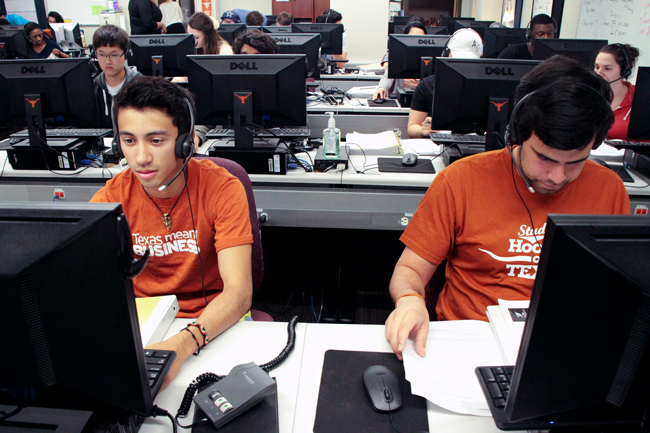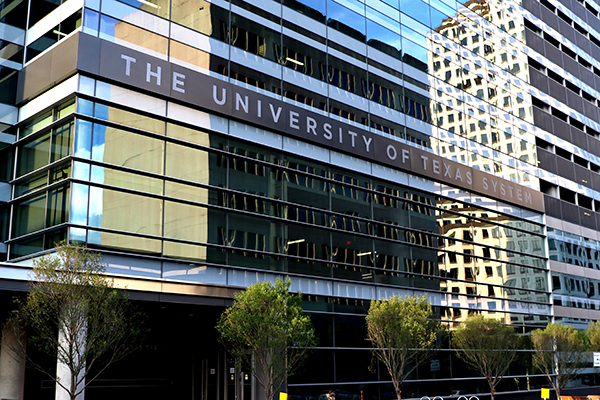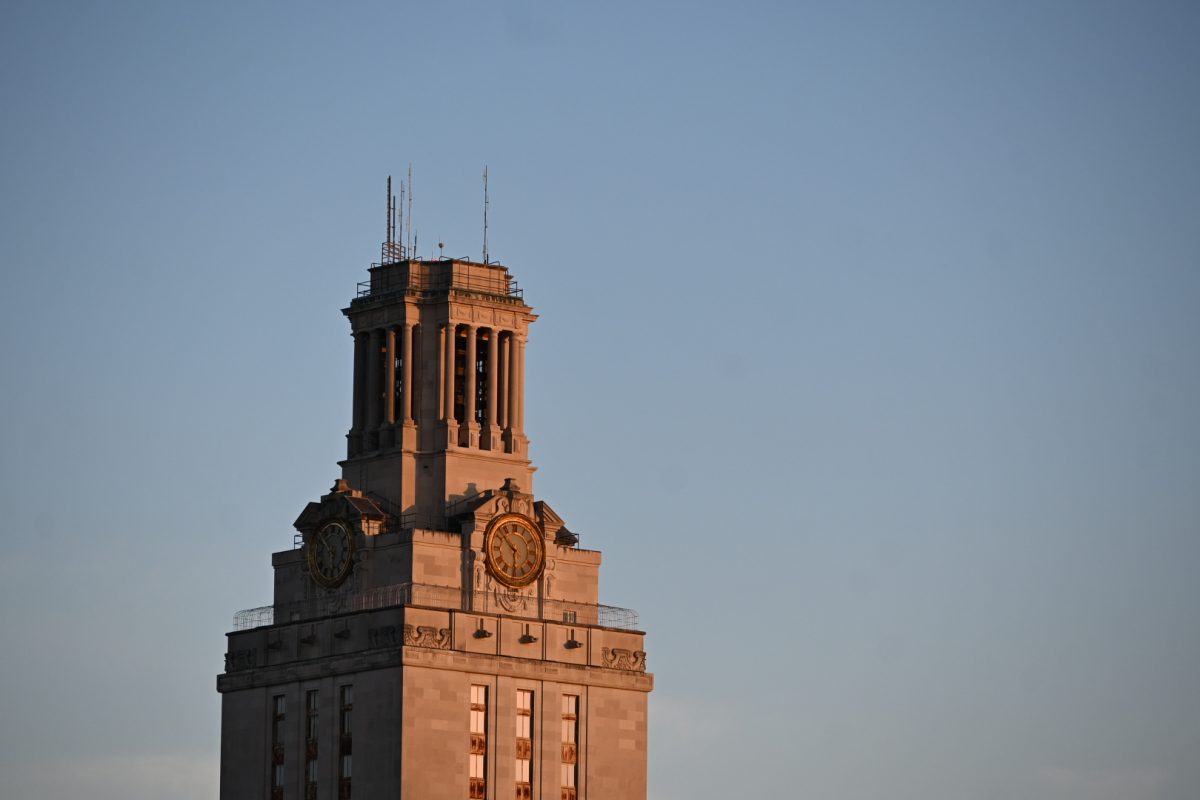After being admitted into the McCombs School of Business, finance senior Brittany Maki received a scholarship endowed by well known alumnus Joe Jamail. Years later, Maki is a student employee at UT’s call center, which is part of the Annual Giving program that collects small gifts from alumni, parents of current students and friends of the University.
Annual Giving, which employs more than 100 students as part-time employees, is part of a three-pronged structure of development at the University. The other two parts are a central University infrastructure and individual college-level efforts, which together field a team of about 300 full-time employees. Through the three fundraising channels, the development team has helped raise $2.08 billion in private support for the University in the last six years.
“I saw the impact of what previous callers had done here,” Maki said during one of her shifts at the call center. “My dad was adamant about me staying home in Houston. The scholarship was enough to come here. Now, I see it every single day with my classmates who have also received scholarships.”
These broad fundraising efforts, from Maki’s scholarship to alumni returning as development officers, are typically headed by a vice president for development — a position that has been vacant at the University for the past four years following the departure of Richard B. Eason. Currently, Julie Hooper, associate vice president for development, has taken the reins of the office. The UT System recently implemented a pay incentive plan for President William Powers Jr. that would give him a still-undertermined bonus on top of his $624,350 base salary if he hires a vice president for development, among other goals.
Unlike some other universities, UT staffs its development efforts with state employees. Meanwhile, fellow Big 12 institutions including the University of Oklahoma and West Virginia University raise private gifts through large external foundations. The UT System has a similar foundation, the University of Texas Foundation, which operates alongside the internal fundraising efforts.
Central development is made up by 129 employees while the others make up the individual development offices of each college, school and unit that work with central development and Annual Giving to meet specific fundraising goals.
“We are what I call a hybrid so we’re both centralized and decentralized,” Hooper said. “All of the 33 college, school and unit development offices have a relationship with our office, and I meet with them regularly on either a quarterly [or] monthly basis.”
Powers credits former UT President Peter Flawn for establishing the philanthropic philosophy the University follows today. Flawn oversaw the 1983 Centennial Commission, which recommended financing the University’s operations through private gifts. In 1983, state appropriations made up 45 percent of UT’s operating budget and private gifts made up 6 percent. Today, state appropriations make up 13 percent of the budget and private gifts make up 9 percent.
Today, the University has 100 frontline fundraisers who actively develop relationships with prospective donors and are assisted by administrative and research support staff, Hooper said.
Typically, the older the college or school, the larger the endowment. The one exception is the Jackson School of Geosciences, which is a much newer school but has the largest endowment.
The Cockrell School of Engineering, which has the second-largest endowment with $407 million, is one of the oldest colleges on campus and has thousands of alumni.
But even with a large alumni base, the Cockrell School does not receive all of engineering alumni’s donations to the University. Nearly 12 percent of engineering alumni give to various programs across the University, but only 5 percent of engineering alumni give back to the Cockrell School, according to engineering development figures.
Development officers and UT’s call center share a database of potential donors coordinated by central development.
“We try really hard to be what I call donor-centered so that we’re thinking about the donor first and foremost and that we’re treating our donors with respect and trying very hard to have what I call a coordinated approach,” Hooper said.
The database has proved essential to colleges and schools with smaller endowments or alumni bases, such as the School of Social Work, which has a $13 million endowment.
Laura Wells, development director for the school, said 75 percent of the School of Social Work’s most recent endowments were created by alumni, former employees or individuals who were impacted by social work, but that this is not enough to reach the school’s fundraising goal.
“To reach our big goal, we have had to reach outside our current donor base,” Wells said. “[Including] people who are University alumni but are not primarily School of Social Work alumni.”
In the last six years, 84 percent of gifts to the University have been for less than $1,000. Beyond small gifts, the University’s president is easily identified as development’s most prominent employee with a calendar continuously filled with fundraising responsibilities, as well as a salary structure that rewards him a bonus for hitting certain fundraising goals.
Powers, who acknowledges he is the face of University fundraising, takes the lead role in larger fundraising efforts and said he believes it is important to raise money for efforts that fall in line with strategic goals of the University, including new programs and buildings.
Powers said he works to keep alumni who may be prospective donors involved in University life by traveling across the state, around the country and internationally to meet with former Longhorns and friends of the University.
“There is a whole ecosystem that does that — deans and development officers,” Powers said. “One thing I’m very proud of is that the process works on a much more cooperative way.”





















